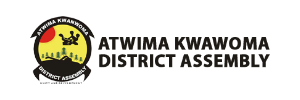On April 9th, 2024, a durbar was held in Twedie to promote the Planting for Food and Jobs Phase II (PFJ 2.0) program. The event aimed to engage stakeholders within the Atwima Kwanwoma District, including local leadership, farmers, and district officials, to ensure the program’s successful implementation.
A total of 110 individuals attended the durbar in Twedie, with a breakdown of 73 males and 37 females. Among the attendees were prominent figures such as the District Chief Executive (DCE), the District Coordinating Director (DCD), the Director of Agriculture, local Chiefs, District Assembly Staff, Assembly Members, and a significant number of farmers.
Presentations and Discussions:
The durbar served as a platform for representatives from the Ministry of Food and Agriculture (MoFA) and local authorities to share details about the PFJ 2.0 program. Key aspects of the program were explained in detail, including:
- Focus on the Entire Agricultural Value Chain.
- Support for Targeted Commodities.
- Access to Credit and Improved Facilities.
The DCE, DCD and the Director of Agriculture, addressed these program features and their benefits to the farmers in the district and across the country. The chiefs also provided words of encouragement, highlighting the program’s potential to enhance food security, reduce food price inflation, and create job opportunities within the district.
Discussion Points:
Discussions during the durbar focused on clarifying details such as:
- The specific crops or livestock that will receive support under PFJ 2.0.
- The process for farmers to access zero-interest credit and other program benefits.
- Registration procedures for farmers to participate in the program.
- The roles and responsibilities of various stakeholders, including farmers, extension officers, and local authorities, in ensuring the program’s success.
Resolution:
Following the durbar in Twedie, it is crucial to take steps to ensure program accessibility and continued engagement. These next steps may include:
- Extension officers following up with farmers to address questions and concerns.
- Organizing information sessions at the community level to provide further details on program implementation.
- Establishing a clear and accessible registration process for interested farmers.
By effectively disseminating information and ensuring program accessibility, the PFJ 2.0 durbar has the potential to significantly contribute to a successful program rollout within the community. Source;Solomon Antwi AGRIC




